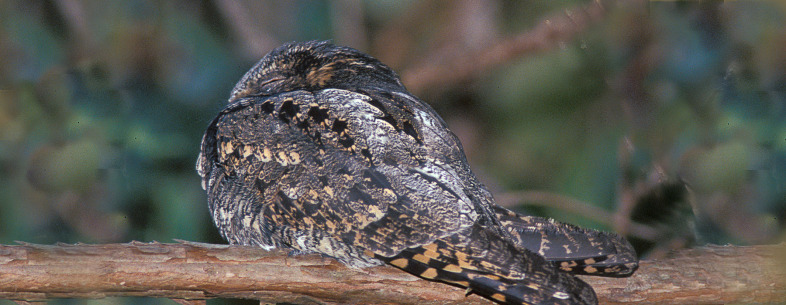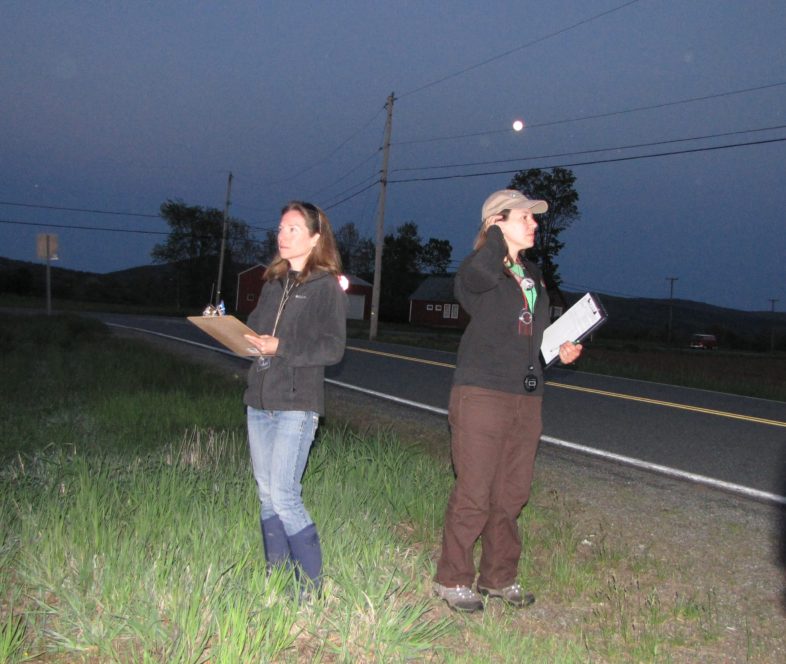With spring on our doorstep, our whip-poor-will survey team and volunteers are looking forward to sunsets and moonlit nights this year more than ever! They might not hear a whip-poor-will on every route, but hearing Wilson’s Snipe winnow at sunset on a rural Vermont road or a Wood Thrush sing his last notes of the evening is a delight. Once the last light fades away and the moon rises, fields become illuminated, porcupines start rambling along dirt roads….and the adventure begins. There are 10 survey points for each route that are spaced a mile apart along roadsides. It takes about an hour and a half to complete a route on moonlit nights in May through early July.
Sound like fun? Please join our adventurous volunteers in surveying Whip-poor-will routes across Vermont on moonlit nights. You can see where available routes are located in Vermont on our online map. This is a wonderful opportunity to help out with a regional conservation project. There is no possible way we could survey this many routes on moonlit, clear nights without the help of volunteers like you! If you are interested in learning more about our survey, please contact Sarah Carline () for more information about this joint project with Vermont Fish & Wildlife.
During spring and summer nights, the relentless chanting – whip-poor-will! whip-poor-will! – carries over mountains and across valleys. The Eastern Whip-poor-will was once heard throughout the Northeast, its unmistakable call a welcome harbinger of spring. But over the past several decades, the former haunts of this insectivorous bird have become silent as the Eastern Whip-poor-will has disappeared from much of its former breeding range.
In response to declines in the Eastern Whip-poor-will populations, the species was listed as Threatened in Vermont. It is unclear what has caused these declines, but some scientists think that it might be from forest maturation and development leading to reduction of edge habitat; predation from cats, raccoons, and other predators known to roam the forest edges; and decline of large moth populations from pesticides and introduced parasitoids used to control other moths that are forest pests. Here’s a recent article about the decline of large moth populations and how it may be affecting insectivores like the Eastern Whip-poor-will.
As a first step towards a better understanding of the habitat characteristics Eastern Whip-poor-wills use in Vermont, and obtaining more precise estimate of their current population size and important breeding locations, VCE is conducting surveys in cooperation with the Vermont Fish & Wildlife Department throughout Vermont, and we need your help!
Reporting Incidental Whip-poor-will Sightings is valuable too
Can’t quite find the time but you are watching birds and you’ve even encountered an Eastern Whip-poor-will? You can still contribute extremely valuable data on their abundance and distribution. Add your sightings of Eastern Whip-poor-wills and other birds to our Vermont eBird or iNaturalist Vermont projects.
Learn more about the Eastern Whip-poor-wills project on our web site.


